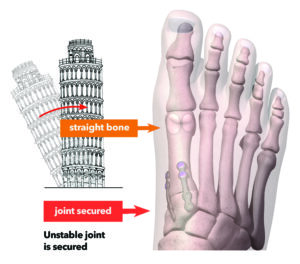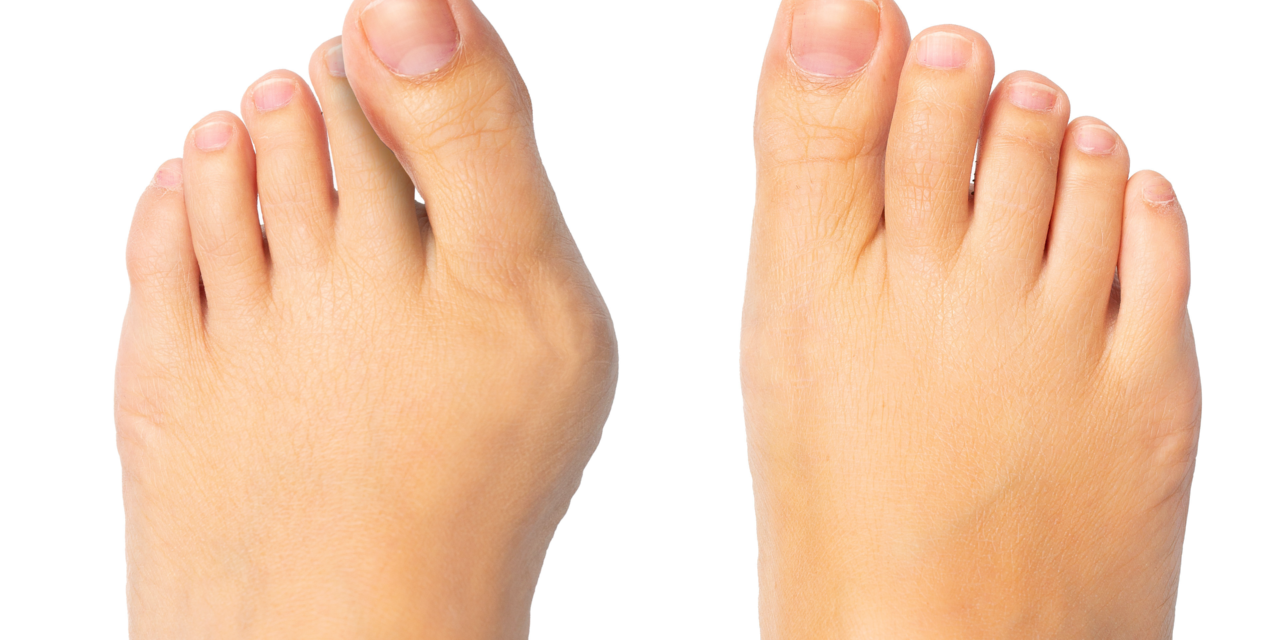By Michael LaCivita, DPM

Michael LaCivita, DPM
A bunion is a bony bump that forms on the joint at the base of the big toe. It develops when bones in the front part of the foot move out of place, causing the tip of the big toe to pull toward the smaller toes.
About 23% of people ages 18 to 65, and 36% of people older than 65, have bunions. Contrary to popular belief, bunions are not caused by ill-fitting shoes. However, ill-fitting shoes aggravate bunions, and wearing high heels with pointy toes can crowd toes, and contribute to mechanical imbalances in the foot’s anatomical structure. Bunions often run in families due to hereditary deformities or anatomical foot structure imbalances. Life events, such as childbearing or expansion of foot size due to aging, contribute to developing bunions. Certain medical conditions can also lead to bunions.
 Bunion signs and symptoms include a bulging bump on the outside of your big toe; redness, soreness, or swelling around the big toe joint; the big toe pointing toward your other toes; hard or swollen skin; intermittent pain; limited movement; and corns or calluses that develop when the first and second toes rub against each other.
Bunion signs and symptoms include a bulging bump on the outside of your big toe; redness, soreness, or swelling around the big toe joint; the big toe pointing toward your other toes; hard or swollen skin; intermittent pain; limited movement; and corns or calluses that develop when the first and second toes rub against each other.
The only way to remove a bunion is surgically, but there are ways to ease the pain they cause, such as wearing wide shoes with a low heel and soft sole; applying an ice pack to the bunion for up to 5 minutes at a time; purchasing bunion pads to prevent shoes from rubbing against the bunion; and taking over the counter pain relievers. Losing weight can also help. If the pain caused by a bunion interferes with your daily activities, you may benefit from seeing a podiatrist.
Currently, Lapiplasty 3D Bunion Correction is the most effective surgery for bunion removal because the procedure fixes the underlying bone deformity that causes bunions. It involves making tiny incisions on the foot’s side and using specialized instruments to cut and realign the bones. Once the bones are in place, metal plates and screws are used to keep them in position while they heal. Patients who undergo Lapiplasty are typically able to bear weight in a walking boot within a few days to a few weeks following surgery. After wearing the boot for 6 to 8 weeks, they transition into wearing comfortable walking shoes. Thereafter, they return to full, unrestricted activities, and resume wearing normal footwear within 4 to 5 months. The success rate for Lapiplasty is very high, with 97% of patients pleased with the results versus older methods of removing bunions.
Michael LaCivita, DPM, is a board-certified podiatrist with Buffalo Medical Group. Dr. LaCivita and Buffalo Medical Group podiatry team members Taylor Hoff, DPM, Jack Route, DPM, and Edward Fitzpatrick, DPM, perform Lapiplasty procedures. To make an appointment with the BMG Podiatry Team, call 716-630-1295. Learn more about Buffalo Medical Group’s podiatric services at www.buffalomedicalgroup.com/services/podiatry, where you can also watch a video about Lapiplasty.












